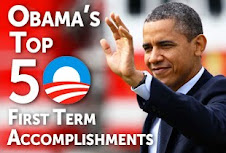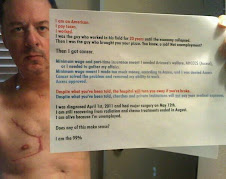
Axel Koester/Corbis
Many people benefited from projects like this one near Los Angeles but had no idea that it was part of the Obama stimulus.
By DAVID FIRESTONE
Published: September 15, 2012
Republicans howled on Thursday when the Federal Reserve, at long last,
took steps to energize the economy. Some were furious at the thought
that even a little economic boost might work to benefit President Obama
just before an election. “It is going to sow some growth in the economy,”
said Raul Labrador, a freshman Tea Party congressman from Idaho, “and
the Obama administration is going to claim credit.”
Mr. Labrador needn’t worry about that. The president is no more likely
to get credit for the Fed’s action — for which he was not responsible —
than he gets for the transformative law for which he was fully
responsible: the 2009 stimulus, which fundamentally turned around the
nation’s economy and its prospects for growth, and yet has disappeared
from the political conversation.
The reputation of the stimulus is meticulously restored from shabby to skillful in Michael Grunwald’s important new book, “The New New Deal.”
His findings will come as a jolt to those who think the law “failed,”
the typical Republican assessment, or was too small and sloppy to have
any effect.
On the most basic level, the American Recovery and Reinvestment Act is
responsible for saving and creating 2.5 million jobs. The majority of
economists agree that it helped the economy grow by as much as 3.8
percent, and kept the unemployment rate from reaching 12 percent.
The stimulus is the reason, in fact, that most Americans are better off
than they were four years ago, when the economy was in serious danger of
shutting down.
But the stimulus did far more than stimulate: it protected the most vulnerable from the recession’s heavy winds. Of the act’s $840 billion final cost,
$1.5 billion went to rent subsidies and emergency housing that kept 1.2
million people under roofs. (That’s why the recession didn’t produce
rampant homelessness.) It increased spending on food stamps,
unemployment benefits and Medicaid, keeping at least seven million
Americans from falling below the poverty line.
And as Mr. Grunwald shows, it made crucial investments in neglected
economic sectors that are likely to pay off for decades. It jump-started
the switch to electronic medical records, which will largely end the
use of paper records by 2015. It poured more than $1 billion into
comparative-effectiveness research on pharmaceuticals. It extended
broadband Internet to thousands of rural communities. And it spent $90
billion on a huge variety of wind, solar and other clean energy projects
that revived the industry. Republicans, of course, only want to talk
about Solyndra, but most of the green investments have been quite
successful, and renewable power output has doubled.
Americans don’t know most of this, and not just because Mitt Romney and
his party denigrate the law as a boondoggle every five minutes.
Democrats, so battered by the transformation of “stimulus” into a
synonym for waste and fraud (of which there was little), have stopped
using the word. Only four speakers at the Democratic convention even
mentioned the recovery act, none using the word stimulus.
Mr. Obama himself didn’t bring it up at all. One of the biggest
accomplishments of his first term — a clear illustration of the
beneficial use of government power, in a law 50 percent larger (in
constant dollars) than the original New Deal — and its author doesn’t
even mention it in his most widely heard re-election speech. Such is the power of Republican misinformation, and Democratic timidity.
Mr. Grunwald argues that the recovery act was not timid, but the
administration’s effort to sell it to the voters was muddled and
ineffective. Not only did White House economists famously overestimate
its impact on the jobless rate, handing Mr. Romney a favorite talking
point, but the administration seemed to feel the benefits would simply
be obvious. Mr. Obama, too cool to appear in an endless stream of photos
with a shovel and hard hat, didn’t slap his name on public works
projects in the self-promoting way of mayors and governors.
How many New Yorkers know that the stimulus is helping to pay for the
Second Avenue subway, or the project to link the Long Island Rail Road
to Grand Central? Almost every American worker received a tax cut from
the act, but only about 10 percent of them noticed it in their
paychecks. White House economists had rejected the idea of distributing
the tax cuts as flashy rebate checks, because people were more likely to
spend the money (and help the economy) if they didn’t notice it. Good
economics, perhaps, but terrible politics.
From the beginning, for purely political reasons, Republicans were
determined to oppose the bill, using silly but tiny expenditures to
discredit the whole thing. Even the moderate Republican senators who
helped push the bill past a filibuster had refused to let it grow past
$800 billion, and prevented it from paying for school construction.


























No comments:
Post a Comment